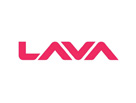6 Real-World Examples of Natural Language Processing
The branch of artificial intelligence, Natural Language Processing, is concerned with using natural language by computers and people to communicate. The ultimate goal of NLP is to effectively read, comprehend, and make sense of human language. The understanding by computers of the structure and meaning of all human languages, allowing developers and users to interact with computers using natural sentences and communication. These assistants can also track and remember user information, such as daily to-dos or recent activities. This is one of the more complex applications of natural language processing that requires the model to understand context and store the information in a database that can be accessed later.
The effective classification of customer sentiments about products and services of a brand could help companies in modifying their marketing strategies. For example, businesses can recognize bad sentiment about their brand and implement countermeasures before the issue spreads out of control. Just like any new technology, it is difficult to measure the potential of NLP for good without exploring its uses. Most important of all, you should check how natural language processing comes into play in the everyday lives of people.
It’s surprising that all languages don’t support this feature; this is the 21st century, after all. And that possessives (“polygon’s vertices”) are used in a very natural way to reference fields within records. For years, trying to translate a sentence from one language to another would consistently return confusing and/or offensively incorrect results.
Much of the information created online and stored in databases is natural human language, and until recently, businesses couldn’t effectively analyze this data. Every day, humans exchange countless words with other humans to get all kinds of things accomplished. But communication is much more than words—there’s context, body language, intonation, and more that help us understand the intent of the words when we communicate with each other. That’s what makes natural language processing, the ability for a machine to understand human speech, such an incredible feat and one that has huge potential to impact so much in our modern existence.
Gmail, for instance, uses NLP to create “smart replies” that can be used to automatically generate a response. Akkio’s no-code AI platform lets you build and deploy a model into a chatbot easily. For instance, Akkio has been used to create a chatbot that automatically predicts credit eligibility for users of a fintech service. The “bag” part of the name refers to the fact that it ignores the order in which words appear, and instead looks only at their presence or absence in a sentence. Words that appear more frequently in the sentence will have a higher numerical value than those that appear less often, and words like “the” or “a” that do not indicate sentiment are ignored.
Applications of Natural Language Processing
This was so prevalent that many questioned if it would ever be possible to accurately translate text. Email filters are common NLP examples you can find online across most servers. Data analysis has come a long way in interpreting survey results, although the final challenge is making sense of open-ended responses and unstructured text. NLP, with the support of other AI disciplines, is working towards making these advanced analyses possible. Smart search is another tool that is driven by NPL, and can be integrated to ecommerce search functions.
How to apply natural language processing to cybersecurity – VentureBeat
How to apply natural language processing to cybersecurity.
Posted: Thu, 23 Nov 2023 08:00:00 GMT [source]
Users of productivity applications ranging from word processors to text entry boxes on a smartphone will doubtless be familiar with features such as autocorrect, which amends text as you’re typing or dictating it. Leveraging the power of AI and NLP, you can effortlessly generate AI-driven configurations for your Slack apps. Simply describe your desired app functionalities in natural language, and the corresponding configuration will be intelligently and accurately created for you.
However, it is also important to emphasize the ways in which people all over the world have been sharing knowledge and new ideas. You will notice that the concept of language plays a crucial role in communication and exchange of information. Today, NLP has invaded nearly every consumer-facing product from fashion advice bots (like the Stitch Fix bot) to AI-powered landing page bots. With Stitch Fix, for instance, people can get personalized fashion advice tailored to their individual style preferences by conversing with a chatbot. Automatic summarization can be particularly useful for data entry, where relevant information is extracted from a product description, for example, and automatically entered into a database. Retently discovered the most relevant topics mentioned by customers, and which ones they valued most.
Actually, current search engine just do ‘document retrieval’, i.e. given some keywords it only returns the relevant ranked documents that contain these keywords. Hence QAS is designed to help people find specific answers to specific questions in restricted domain. In many applications, NLP software is used to interpret and understand human language, while ML is used to detect patterns and anomalies and learn from analyzing data. With an ever-growing number of use cases, NLP, ML and AI are ubiquitous in modern life, and most people have encountered these technologies in action without even being aware of it. Natural language understanding (NLU) allows machines to understand language, and natural language generation (NLG) gives machines the ability to “speak.”Ideally, this provides the desired response.
Organizations and potential customers can then interact through the most convenient language and format. Natural Language Processing (NLP) technology is transforming the way that businesses interact with customers. With its ability to process human language, NLP is allowing companies to process customer data quickly and effectively, and to make decisions based on that data. They can also be used for providing personalized product recommendations, offering discounts, helping with refunds and return procedures, and many other tasks. CallMiner is the global leader in conversation analytics to drive business performance improvement.
A creole such as Haitian Creole has its own grammar, vocabulary and literature. It is spoken by over 10 million people worldwide and is one of the two official languages of the Republic of Haiti. The way that humans convey information to each other is called Natural Language. Every day humans share a large quality of information with each other in various languages as speech or text. At this stage, the computer programming language is converted into an audible or textual format for the user.
Semantic Analysis
Sentiment analysis (seen in the above chart) is one of the most popular NLP tasks, where machine learning models are trained to classify text by polarity of opinion (positive, negative, neutral, and everywhere in between). For example, any company that collects customer feedback in free-form as complaints, social media posts or survey results like NPS, can use NLP to find actionable insights in this data. With sentiment analysis, businesses can extract and utilize actionable insights to improve customer experience and satisfaction levels.
If you are looking to learn the applications of NLP and become an expert in Artificial Intelligence, Simplilearn’s AI Course would be the ideal way to go about it. You can make the learning process faster by getting rid of non-essential words, which add little meaning to our statement and are just there to make our statement sound more cohesive. Autocorrect relies on NLP and machine learning to detect errors and automatically correct them. “One of the features that use Natural Language Processing (NLP) is the Autocorrect function. On the other hand, NLP can take in more factors, such as previous search data and context.
What’s the Difference Between Natural Language Processing and Machine Learning? – MUO – MakeUseOf
What’s the Difference Between Natural Language Processing and Machine Learning?.
Posted: Wed, 18 Oct 2023 07:00:00 GMT [source]
For example, two former Google Translate engineers developed the Lilt translation tool and can integrate with third-party business platforms such as customer support software. The system uses interaction with a human translator to learn its language idioms and improve and enhance its performance over time. This is another NLP-powered feature that’s been around for a while in word processors and other office productivity software. Some tools can check your spelling on the fly as you type, and more basic implementations run a spell check after you finish. One of the oldest and best examples of natural language processing is the human brain. NLP works similarly to your brain in that it has an input such as a microphone, audio file, or text block.
Artificial intelligence is on the rise, with one-third of businesses using the technology regularly for at least one business function. The abundance of AI tools in the market brings the added advantage of natural language processing capabilities. Most of the time, there is a programmed answering machine on the other side.
Just as humans use their brains, the computer processes that input using a program, converting it into code that the computer can recognize. The last step is the output in a language and format that humans can understand. Sequence to sequence models are a very recent addition to the family of models used in NLP. A sequence to sequence (or seq2seq) model takes an entire sentence or document as input (as in a document classifier) but it produces a sentence or some other sequence (for example, a computer program) as output. Ties with cognitive linguistics are part of the historical heritage of NLP, but they have been less frequently addressed since the statistical turn during the 1990s. The following is a list of some of the most commonly researched tasks in natural language processing.
In one case, Akkio was used to classify the sentiment of tweets about a brand’s products, driving real-time customer feedback and allowing companies to adjust their marketing strategies accordingly. If a negative Chat GPT sentiment is detected, companies can quickly address customer needs before the situation escalates. NLP is a branch of Artificial Intelligence that deals with understanding and generating natural language.
The outline of natural language processing examples must emphasize the possibility of using NLP for generating personalized recommendations for e-commerce. NLP models could analyze customer reviews and search history of customers through text and voice data alongside customer service conversations and product descriptions. https://chat.openai.com/ At the same time, there is a growing trend towards combining natural language understanding and speech recognition to create personalized experiences for users. For example, AI-driven chatbots are being used by banks, airlines, and other businesses to provide customer service and support that is tailored to the individual.
Finally, you’ll see for yourself just how easy it is to get started with code-free natural language processing tools. Some of the popular NLP-based applications include voice assistants, chatbots, translation apps, and text-based scanning. These applications simplify business operations and improve productivity extensively. However, as you embark on the transformative journey focused on more personalized services, it becomes imperative to adopt natural language processing for your business.
Unlike humans, who inherently grasp the existence of linguistic rules (such as grammar, syntax, and punctuation), computers require training to acquire this understanding. Examples include first and last names, age, geographic locations, addresses, product type, email addresses, company name, etc. Text classification has broad applicability such as social media analysis, sentiment analysis, spam filtering, and spam detection. Google has employed computer learning extensively to hone its search results. Google’s BERT (Bidirectional Encoder Representations from Transformers), an NLP pre-training method, is one of the crucial implementations.
Because of their complexity, generally it takes a lot of data to train a deep neural network, and processing it takes a lot of compute power and time. Modern deep neural network NLP models are trained from a diverse array of sources, such as all of Wikipedia and data scraped from the web. The training data might be on the order of 10 GB or more in size, and it might take a week or more on a high-performance cluster to train the deep neural network. (Researchers find that training even deeper models from even larger datasets have even higher performance, so currently there is a race to train bigger and bigger models from larger and larger datasets). Natural Language Processing, commonly abbreviated as NLP, is the union of linguistics and computer science. It’s a subfield of artificial intelligence (AI) focused on enabling machines to understand, interpret, and produce human language.
Several prominent clothing retailers, including Neiman Marcus, Forever 21 and Carhartt, incorporate BloomReach’s flagship product, BloomReach Experience (brX). The suite includes a self-learning search and optimizable browsing functions and landing pages, all of which are driven by natural language processing. As a result, companies with global audiences can adapt their content to fit a range of cultures and contexts.
Personalized marketing is one possible use for natural language processing examples. Companies that use natural language processing customize marketing messages depending on the client’s preferences, actions, and emotions, increasing engagement rates. Additionally, that technology has the potential to produce even more sophisticated chatbots and virtual assistants that can comprehend complicated questions, sarcasm, and emotions, dramatically improving the user experience. Their mobile app has an AI-powered chatbot virtual barista that accepts orders verbally or textually. After getting client confirmation, the chatbot understands the demand and transmits it to the nearby Starbucks location. Starbucks also uses natural language processing for opinion analysis to keep track of consumer comments on social media.
My 25 year long journey in Artificial Intelligence
Through these examples of natural language processing, you will see how AI-enabled platforms understand data in the same manner as a human, while decoding nuances in language, semantics, and bringing insights to the forefront. In summary, Natural language processing is an exciting area of artificial intelligence development that fuels a wide range of new products such as search engines, chatbots, recommendation systems, and speech-to-text systems. As human interfaces natural language programming examples with computers continue to move away from buttons, forms, and domain-specific languages, the demand for growth in natural language processing will continue to increase. For this reason, Oracle Cloud Infrastructure is committed to providing on-premises performance with our performance-optimized compute shapes and tools for NLP. Oracle Cloud Infrastructure offers an array of GPU shapes that you can deploy in minutes to begin experimenting with NLP.
Systems with NLP capability can use algorithms and machine learning to analyze, interpret, and extract meaning from written text or speech. One of the most common applications of NLP is in virtual assistants like Siri, Alexa, and Google Assistant. These AI-powered tools understand and process human speech, allowing users to interact with their devices using natural language. This technology has revolutionized how we search for information, control smart home devices, and manage our schedules. Efficiency is a key priority for business, and natural language processing examples also play an essential role here.
Bag-of-words, for example, is an algorithm that encodes a sentence into a numerical vector, which can be used for sentiment analysis. Other interesting applications of NLP revolve around customer service automation. This concept uses AI-based technology to eliminate or reduce routine manual tasks in customer support, saving agents valuable time, and making processes more efficient. Imagine you’ve just released a new product and want to detect your customers’ initial reactions. By tracking sentiment analysis, you can spot these negative comments right away and respond immediately.
There’s often not enough time to read all the articles your boss, family, and friends send over. You can foun additiona information about ai customer service and artificial intelligence and NLP. The prospective uses of NLP are intriguing and promising as we look to the future. Companies that proactively recognize, use, and adapt to these technological breakthroughs will succeed in the cutthroat digital environment. Accepting NLP is now a need for company success in the current day and is no longer a choice.
Implementation Aspects of Syntactic Analysis
NLP solutions can be a boon for companies, saving time on cumbersome tasks and cutting overhead expenses to a large extent. By leveraging NLP in business, you can considerably improve your operational efficiency, product performance, and, eventually, your profit margins. NLP is growing increasingly sophisticated, yet much work remains to be done. Current systems are prone to bias and incoherence, and occasionally behave erratically.
Only the introduction of hidden Markov models, applied to part-of-speech tagging, announced the end of the old rule-based approach. Through Natural Language Processing, businesses can extract meaningful insights from this data deluge. By offering real-time, human-like interactions, businesses are not only resolving queries swiftly but also providing a personalized touch, raising overall customer satisfaction. Think about the last time your messaging app suggested the next word or auto-corrected a typo. This is NLP in action, continuously learning from your typing habits to make real-time predictions and enhance your typing experience. Voice assistants like Siri or Google Assistant are prime Natural Language Processing examples.
Below, you can see that most of the responses referred to “Product Features,” followed by “Product UX” and “Customer Support” (the last two topics were mentioned mostly by Promoters). Sentence tokenization splits sentences within a text, and word tokenization splits words within a sentence. Generally, word tokens are separated by blank spaces, and sentence tokens by stops.
Natural language processing (NLP) is a branch of Artificial Intelligence or AI, that falls under the umbrella of computer vision. The NLP practice is focused on giving computers human abilities in relation to language, like the power to understand spoken words and text. Natural Language Processing (NLP) is at work all around us, making our lives easier at every turn, yet we don’t often think about it. From predictive text to data analysis, NLP’s applications in our everyday lives are far-ranging. Rule-based systems rely on explicitly defined rules or heuristics to make decisions or perform tasks. These rules are typically designed by domain experts and encoded into the system.
NLP tools can be your listening ear on social media, as they can pick up on what people say about your brand on each platform. If your audience expresses the need for more video subtitles or wants to see more written content from your brand, you can use NLP transcription tools to fulfill this request. Because NLP tools recognize patterns in language, they can easily create automated summaries of your transcriptions in the form of a paragraph or a list of bullet points. These summaries are excellent for blog content or social media captions and allow you to repurpose your content to maximize your time and creativity. Because NLP tools are so easy and quick to use, you can scale your content creation and business much quicker than before without hiring more staff members.
For example, an application that allows you to scan a paper copy and turns this into a PDF document. After the text is converted, it can be used for other NLP applications like sentiment analysis and language translation. NLP can also help you route the customer support tickets to the right person according to their content and topic.
In order for the parsing algorithm to construct this parse tree, a set of rewrite rules, which describe what tree structures are legal, need to be constructed. Natural Language Processing (NLP) refers to AI method of communicating with an intelligent systems using a natural language such as English. For example, Sprout Social is a social media listening tool for monitoring and analyzing the activity and discourse concerning a particular brand.
The goal of NLP is to create software that understands language as well as we do. Natural language processing (NLP) is a branch of artificial intelligence (AI) that assists in the process of programming computers/computer software to ‘learn’ human languages. One of the annoying consequences of not normalising spelling is that words like normalising/normalizing do not tend to be picked up as high frequency words if they are split between variants. For that reason we often have to use spelling and grammar normalisation tools.
NLP, meaning Natural Language Processing, is a branch of artificial intelligence (AI) that focuses on the interaction between computers and humans using human language. Its primary objective is to empower computers to comprehend, interpret, and produce human language effectively. NLP encompasses diverse tasks such as text analysis, language translation, sentiment analysis, and speech recognition. Continuously evolving with technological advancements and ongoing research, NLP plays a pivotal role in bridging the gap between human communication and machine understanding. But deep learning is a more flexible, intuitive approach in which algorithms learn to identify speakers’ intent from many examples — almost like how a child would learn human language. Deeper Insights empowers companies to ramp up productivity levels with a set of AI and natural language processing tools.
In contrast, machine translation allows them to render content from one language to another, making the world feel a bit smaller. By understanding NLP’s essence, you’re not only getting a grasp on a pivotal AI subfield but also appreciating the intricate dance between human cognition and machine learning. In this exploration, we’ll journey deep into some Natural Language Processing examples, as well as uncover the mechanics of how machines interpret and generate human language. As a matter of fact, chatbots had already made their mark before the arrival of smart assistants such as Siri and Alexa. Chatbots were the earliest examples of virtual assistants prepared for solving customer queries and service requests.
Employee-recruitment software developer Hirevue uses NLP-fueled chatbot technology in a more advanced way than, say, a standard-issue customer assistance bot. In this case, the bot is an AI hiring assistant that initializes the preliminary job interview process, matches candidates with best-fit jobs, updates candidate statuses and sends automated SMS messages to candidates. Because of this constant engagement, companies are less likely to lose well-qualified candidates due to unreturned messages and missed opportunities to fill roles that better suit certain candidates. Conversation analytics provides business insights that lead to better CX and business outcomes for technology companies.
Speech-to-text transcriptions have notoriously been tedious and difficult to produce. Under normal circumstances, a human transcriptionist has to sit at a computer with headphones and a pedal, typing every word they hear. Automated NLP tools have features that allow for quick transcription of audio files into text.
When you send out surveys, be it to customers, employees, or any other group, you need to be able to draw actionable insights from the data you get back. Chatbots might be the first thing you think of (we’ll get to that in more detail soon). But there are actually a number of other ways NLP can be used to automate customer service. Customer service costs businesses a great deal in both time and money, especially during growth periods. They are effectively trained by their owner and, like other applications of NLP, learn from experience in order to provide better, more tailored assistance. Smart assistants, which were once in the realm of science fiction, are now commonplace.
It assesses public opinion of its goods and services and offers data that can be used to boost customer happiness and promote development. There is now an entire ecosystem of providers delivering pretrained deep learning models that are trained on different combinations of languages, datasets, and pretraining tasks. These pretrained models can be downloaded and fine-tuned for a wide variety of different target tasks. Natural Language Processing, or NLP, is a subdomain of artificial intelligence and focuses primarily on interpretation and generation of natural language. It helps machines or computers understand the meaning of words and phrases in user statements.
By bringing NLP into the workplace, companies can tap into its powerful time-saving capabilities to give time back to their data teams. Now they can focus on analyzing data to find what’s relevant amidst the chaos, and gain valuable insights that help drive the right business decisions. There are many possible applications in the future, and they offer great promise for the corporate sector. As machine learning and AI develop, NLP is anticipated to grow in complexity, adaptability, and precision.
They can recognize your natural speech as it is and produce output as close to natural written language as possible. NLP systems can streamline business operations by automating employees’ workflows. Enhanced with this advanced technology, software and programs significantly optimize audio and video transcription, facilitating the seamless creation of accurate captions and rich content. This streamlined process is remarkably efficient and user-friendly, enabling individuals from diverse backgrounds to effortlessly produce content that is both engaging and captivating. Machines are still pretty primitive – you provide an input and they provide an output.
With Akkio, we are able to build and deploy AI models in minutes, with no prior machine learning expertise or coding.” Sign up for a free trial of Akkio and see how NLP can help your business. SaaS solutions like MonkeyLearn offer ready-to-use NLP templates for analyzing specific data types. In this tutorial, below, we’ll take you through how to perform sentiment analysis combined with keyword extraction, using our customized template.
For example, some email programs can automatically suggest an appropriate reply to a message based on its content—these programs use NLP to read, analyze, and respond to your message. The biggest advantage of machine learning models is their ability to learn on their own, with no need to define manual rules. You just need a set of relevant training data with several examples for the tags you want to analyze. Natural language processing is a form of artificial intelligence that helps computers read and respond by simulating the human ability to understand everyday language.
- The beauty of NLP is that it all happens without your needing to know how it works.
- Bag-of-words, for example, is an algorithm that encodes a sentence into a numerical vector, which can be used for sentiment analysis.
- However, it is also important to emphasize the ways in which people all over the world have been sharing knowledge and new ideas.
- That’s why smart assistants like Siri, Alexa and Google Assistant are growing increasingly popular.
- Just as humans use their brains, the computer processes that input using a program, converting it into code that the computer can recognize.
As more advancements in NLP, ML, and AI emerge, it will become even more prominent. Today, we can’t hear the word “chatbot” and not think of the latest generation of chatbots powered by large language models, such as ChatGPT, Bard, Bing and Ernie, to name a few. It’s important to understand that the content produced is not based on a human-like understanding of what was written, but a prediction of the words that might come next.
The software also allows for a personalized experience, offering trending products or goods that a customer previously searched. Search engines use natural language processing to throw up relevant results based on the perceived intent of the user, or similar searches conducted in the past. This is one of the longest-running natural language processing examples in action.
Deep learning is a kind of machine learning that can learn very complex patterns from large datasets, which means that it is ideally suited to learning the complexities of natural language from datasets sourced from the web. Natural language understanding (NLU) and natural language generation (NLG) refer to using computers to understand and produce human language, respectively. This is also called “language out” by summarizing by meaningful information into text using a concept known as “grammar of graphics.”
And yet, although NLP sounds like a silver bullet that solves all, that isn’t the reality. Getting started with one process can indeed help us pave the way to structure further processes for more complex ideas with more data. The tools will notify you of any patterns and trends, for example, a glowing review, which would be a positive sentiment that can be used as a customer testimonial. These devices are trained by their owners and learn more as time progresses to provide even better and specialized assistance, much like other applications of NLP. On average, retailers with a semantic search bar experience a 2% cart abandonment rate, which is significantly lower than the 40% rate found on websites with a non-semantic search bar. SpaCy and Gensim are examples of code-based libraries that are simplifying the process of drawing insights from raw text.








